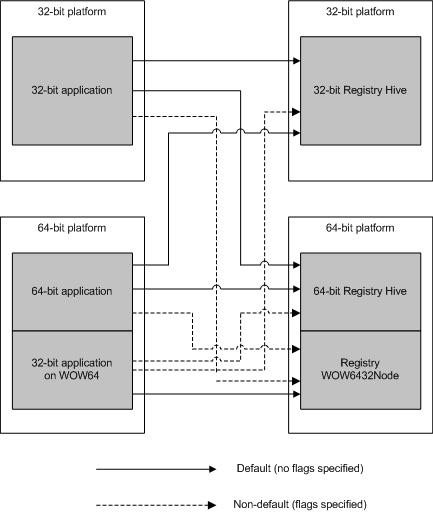Getting and Providing Data on a 64-bit Computer
Client applications and scripts that access standard WMI 32-bit providers continue to operate normally when running on a 64-bit operating system. Only two preinstalled providers, the System Registry provider and the View provider, have 64-bit versions which run side-by-side with the 32-bit versions. However, a 32-bit application that requests 32-bit Windows Driver Model (WDM) instances receives the default 64-bit WDM class instances on a 64-bit operating system.
Accessing Default and Nondefault Provider Data
Generally, provider writers do not include both 32-bit and 64-bit versions of a provider in the same operating system. If no 64-bit provider exists, a 32-bit provider can continue to run through the facilities of WOW64. A 64-bit provider can likewise supply data to a 32-bit application. For more information, see Providing WMI Data on a 64-bit Platform.
If two versions exist, client applications and scripts can use the context parameters available in the COM API and the Scripting API to connect explicitly to a specific nondefault WMI provider, if it is available. For more information, see Requesting WMI Data on a 64-bit Platform.
The following diagram shows the default and nondefault connections, using the registry as an example for which two providers can exist side-by-side on a 64-bit platform.

Related topics